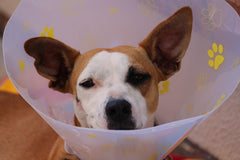
If you have thought about adopting or have adopted a bunny or a rabbit, you should know how to care for your new pet. Pet health and hygiene are the upmost importance. However, their happiness is just as important. Rabbits are unique in their own right. They are much different than cats or dogs. Their needs are so specific that they require their care and attention to live a long and happy life. Let’s go over the steps on the proper bunny care.
Setting Up Your Rabbit’s New Home
Luckily for you, you have options when it comes to where your rabbit should eat, sleep, and play. If you have a safe room that is bunny-proofed, they can live in the space you provide. Many find it easy to buy a puppy pen, a rabbit cage, or a bunny condo. Do be aware, though. Your rabbit should feel comfortable to hop around. If you must house your bunny in a cage, do take them out for a few hours throughout the day so they can bounce around and have some good exercise. Please don’t isolate your rabbit from your family. You can have them explore your living room or family room for a little socialization.
Bunny Proofing Your Space
As previously mentioned, your rabbit must be able to hop around to feel happy and healthy. To let them explore, you must have your space bunny-proofed. You will want to cover your wires with flex-tubing or plastic sleeves. Otherwise, moving your wires about 3-4 feet above bunny height will keep your cables out of reach. Baseboards are not safe from being knawing either. Make sure you cover your baseboards with plastic guards or furring strips. Rabbits love to chew undersides of beds, any household item in their free space, plants, and pretty much everything you can think of. Make sure anything they can ruin is put high up or out of the room.
Fresh Hay
One component of your new pet’s health is fresh hay. Always have some hay available to your bunny rabbit. A rabbit is also kept happy and healthy with alfalfa. Adult rabbits need timothy hay, oat hay, or grass hay. Be sure to set up a hay feeder, large enough to keep lots of hay clean, dry, and accessible.
Rabbits Love Greens
Along with hay, rabbits need fresh vegetables, fiber pellets, and fresh water every day. Taking care of a bunny requires you to feed them greens so they can be strong and healthy. Here’s a list of veggies your rabbit can eat:
- Herbs: basil, cilantro, dill, mint, oregano, parsley, rosemary, sage, thyme
- Lettuces: romaine, green leaf, red leaf, Boston bibb, arugula, butter
- Okra leaves
- Radicchio
- Radish tops
- Sprouts: alfalfa, radish, clover
- Watercress
- Wheatgrass
- Zucchini
- Bell peppers
- Bok choy
- Brussels sprouts
- Carrot tops
- Cucumber
- Endive
- Escarole
- Fennel
- Collard greens
- Dandelion greens (pesticide-free)
- Flowers: calendula, chamomile, daylily, dianthus, English daisy, hibiscus, honeysuckle, marigold, nasturtium, pansy, rose
- Kale
- Spinach
- Broccoli (stems and leaves only)
- Carrots
- Chard
- Clover
Rabbits Need a Litter Box, Too
Much like cats, rabbits have an instinct to go to the bathroom in a particular area. Get a cat litter box, or you can get a shallow storage bin, either at medium in size. Place them near their hay feeder or food and water area. You will need to fill their litter box with recycled newspaper pellet litter (rabbit-safe, of course). Cat litter, clumping clay, and wood shavings are not safe for rabbits, so do not use those. Place hay on top of the litter as rabbits like to eat and poop at the same time.
Rabbits Crave Mental Stimulation
Rabbits are often bored easily. Along with exercise, rabbits need to work out their brains in the form of mental stimulation. You can pick up a cardboard castle at a pet store. Your rabbit will spend hours chewing away and also hanging out in their palace. There are some toys you can also get from the pet stores, designed explicitly for rabbits stimulation. This is often the most forgotten about in bunny care.
Proper Grooming
While rabbits wash themselves frequently, you are still required to care for your pet by grooming them. Rabbits naturally shed around two times a year. Practice good pet care by brushing your rabbit’s fur to remove excess frequently. If left unkept, your rabbit could ingest their fur and have digestion issues. Rabbits also grow long nails, so nail clipping every now and then is essential so they don’t get caught on anything.
Get a Vet Who Specializes In Rabbits
It’s easy for a rabbit’s illness to go unnoticed. Rabbits will hide their illnesses. They hide their illnesses because they are prey animals. Keep an eye on your rabbit’s behavior, and if they are not eating, drinking, or going to the bathroom regularly, know to take your bun to a vet for treatment. A vet who knows how to care for rabbits is critical, too. Be sure to ask around and compare vets. Regular vet checkups are important as well. Have your vet check your rabbit’s ears, eyes, teeth, and tummy. Always consider spaying or neutering your rabbit to reduce behavior such as poor litter box habits, aggressiveness, and overall health of your pet.
Get to Know Your Rabbit’s Unique Behavior
Rabbits are funny creatures. They are the best pets to have but have different personalities than cats or dogs. Please get to know your rabbit by examining how he or she behaves. For instance, rabbits love being low to the ground, so don’t pick them up much. Or notice when your rabbit responds the best to petting. You will be developing a different kind of relationship this way.
Before you get started caring for your rabbit, we have a handy shopping list so you have everything you need!
Helpful Rabbit Supplies
- Puppy pens (36 inches or higher)
- Baby Gates
- Wire Covers (plastic sleeves or flex tubing)
- Furniture or baseboard protection (furring strips or flex tubing)
- Litter Box
- Rabbit-friendly litter (recycles newspaper pellet litter)
- Food and Water bowls
- Hay Feeder
- Chair mat (to protect the floor)
- Food (pellets, hay, veggies, and water)
- Cardboard box/cardboard castle (an easy DIY if you cut out windows)
- Chewy toys
- Nail Clippers
- Brush for pet or rabbit fur
Hopefully, this rabbit care guide will help make life easier for you and your pet rabbit!
Are rabbits hard to take care of?
How to properly care for a rabbit?
What not do when caring for a rabbit?
Check out our blog and follow me on LinkedIn to stay up-to-date!




